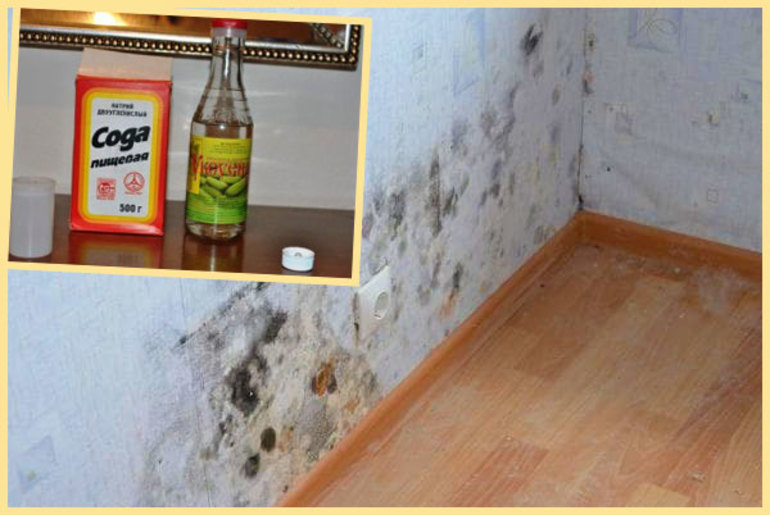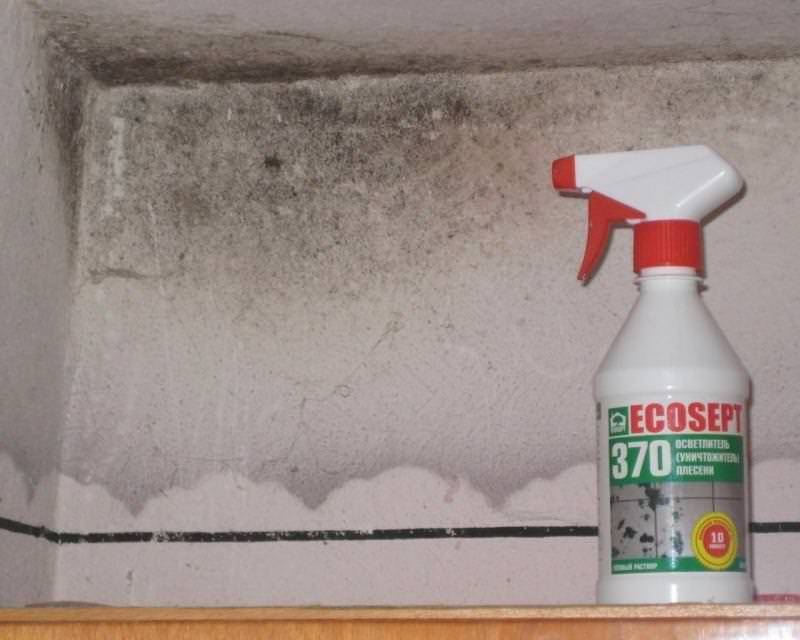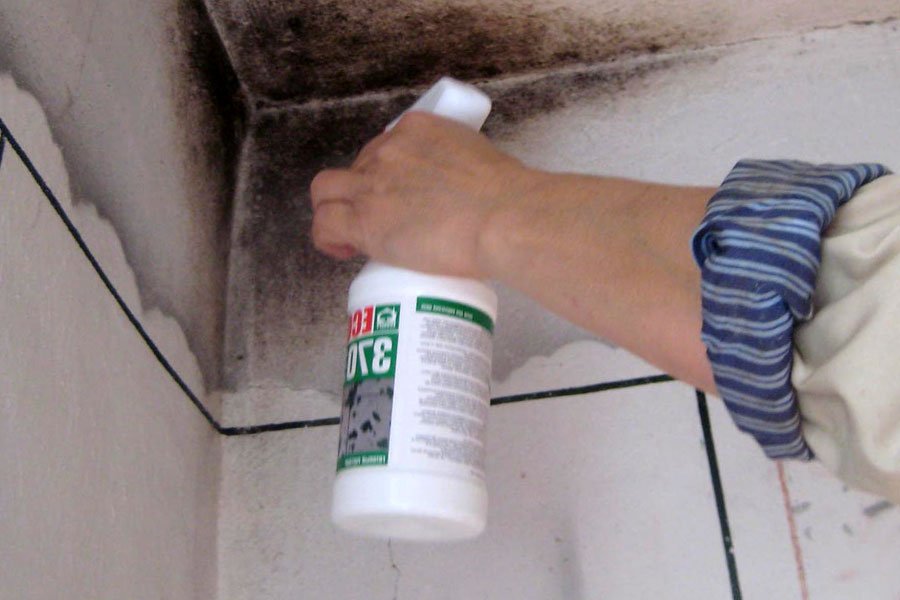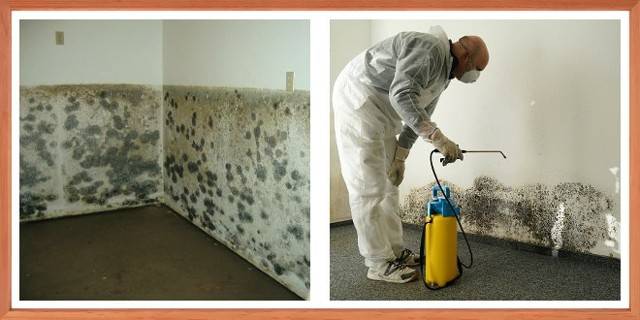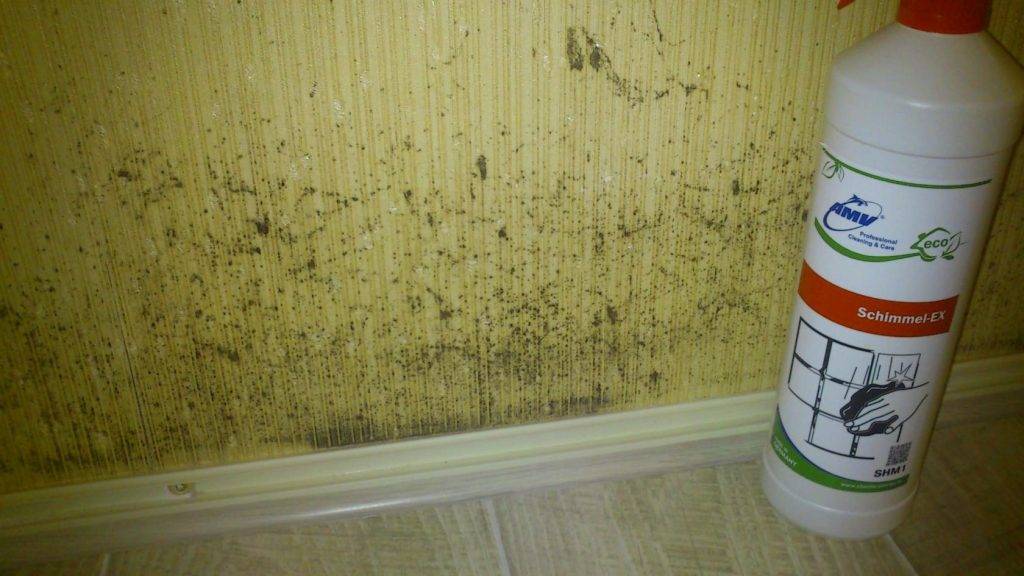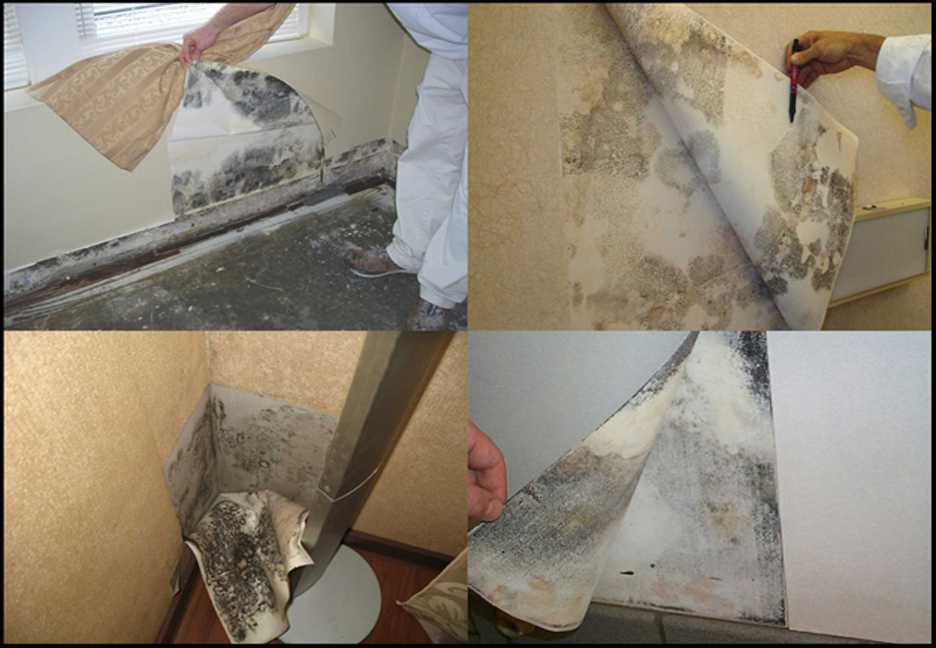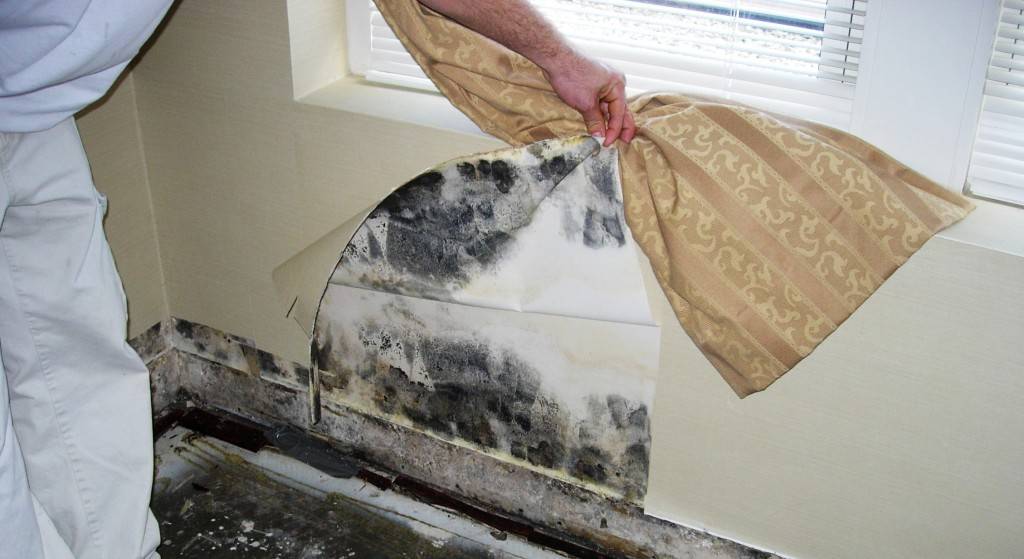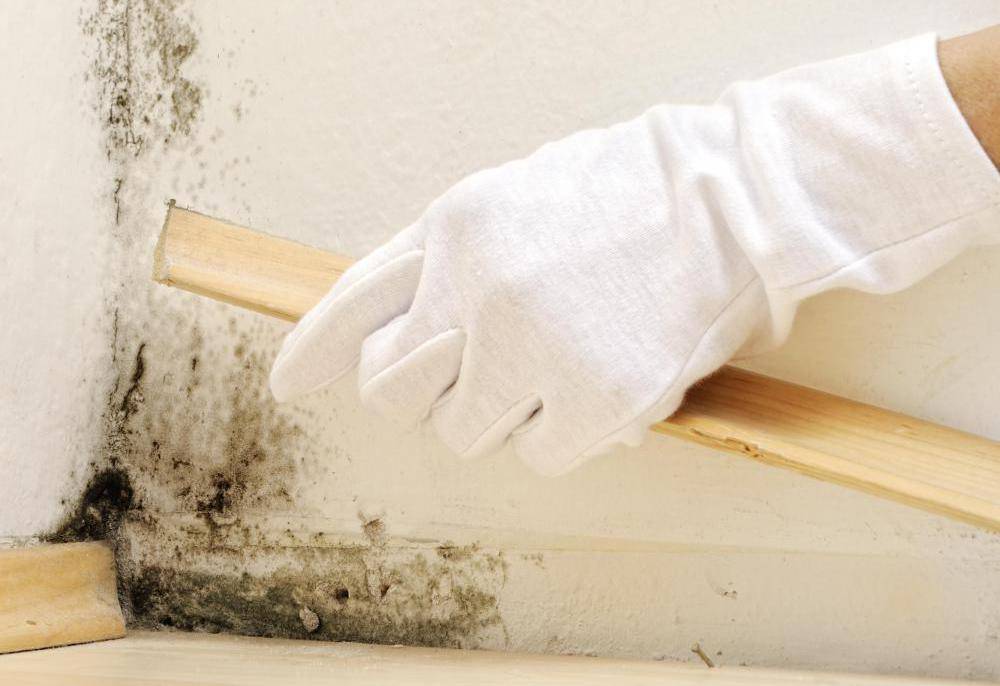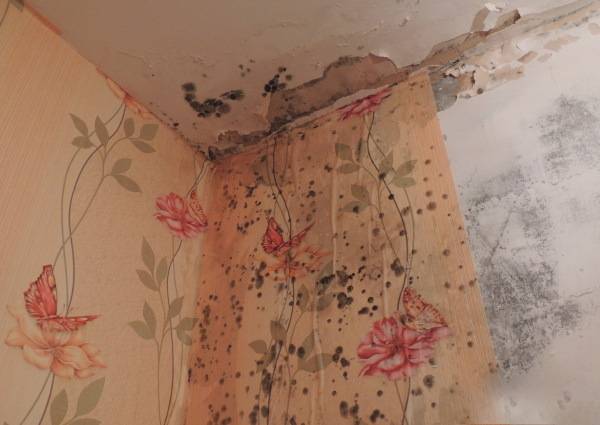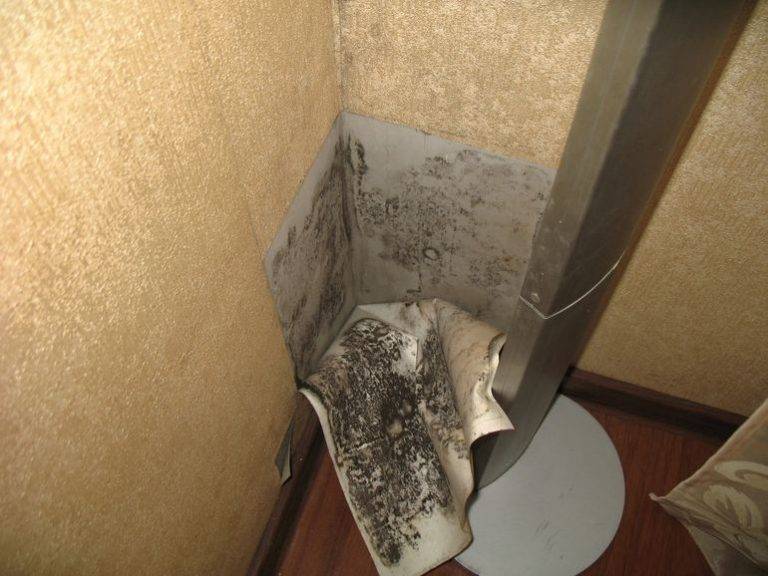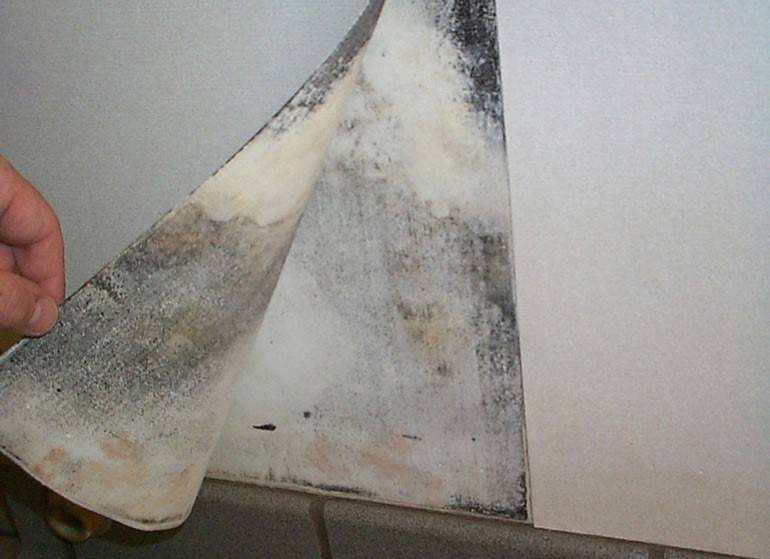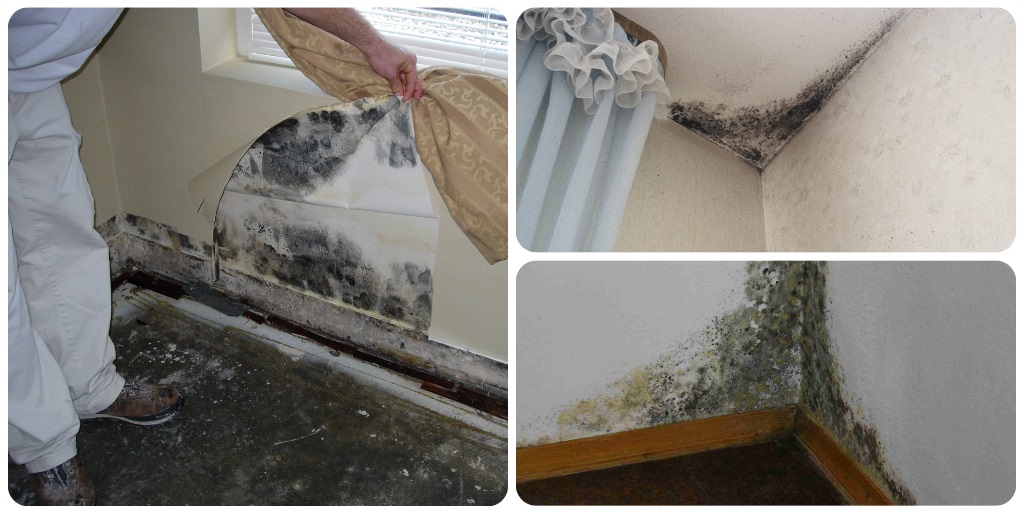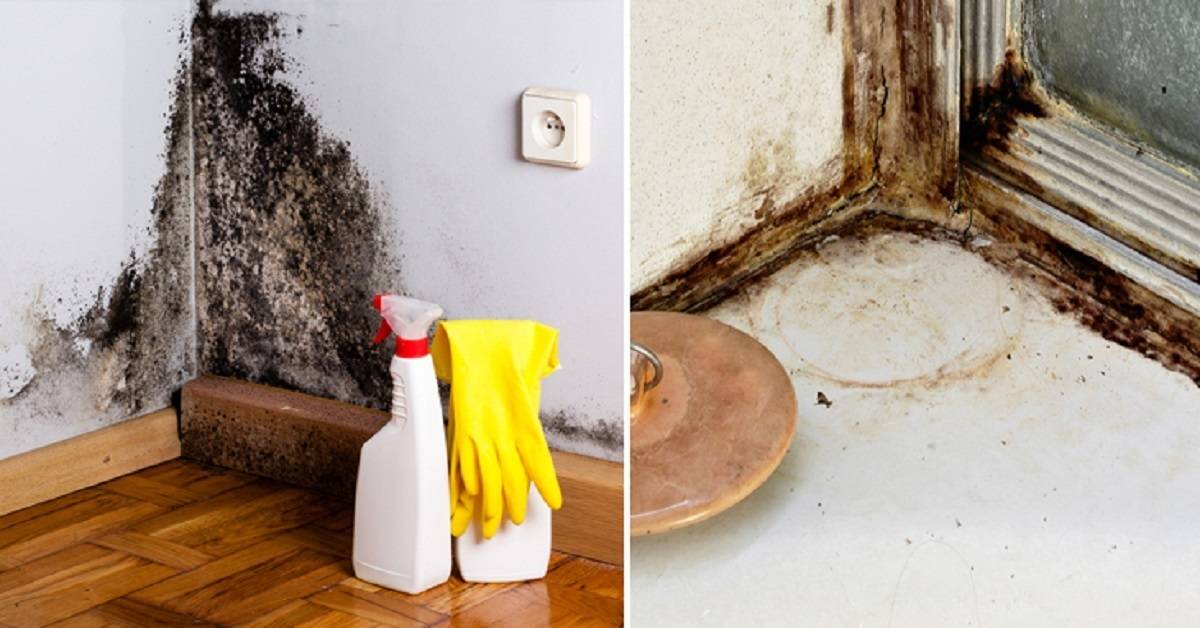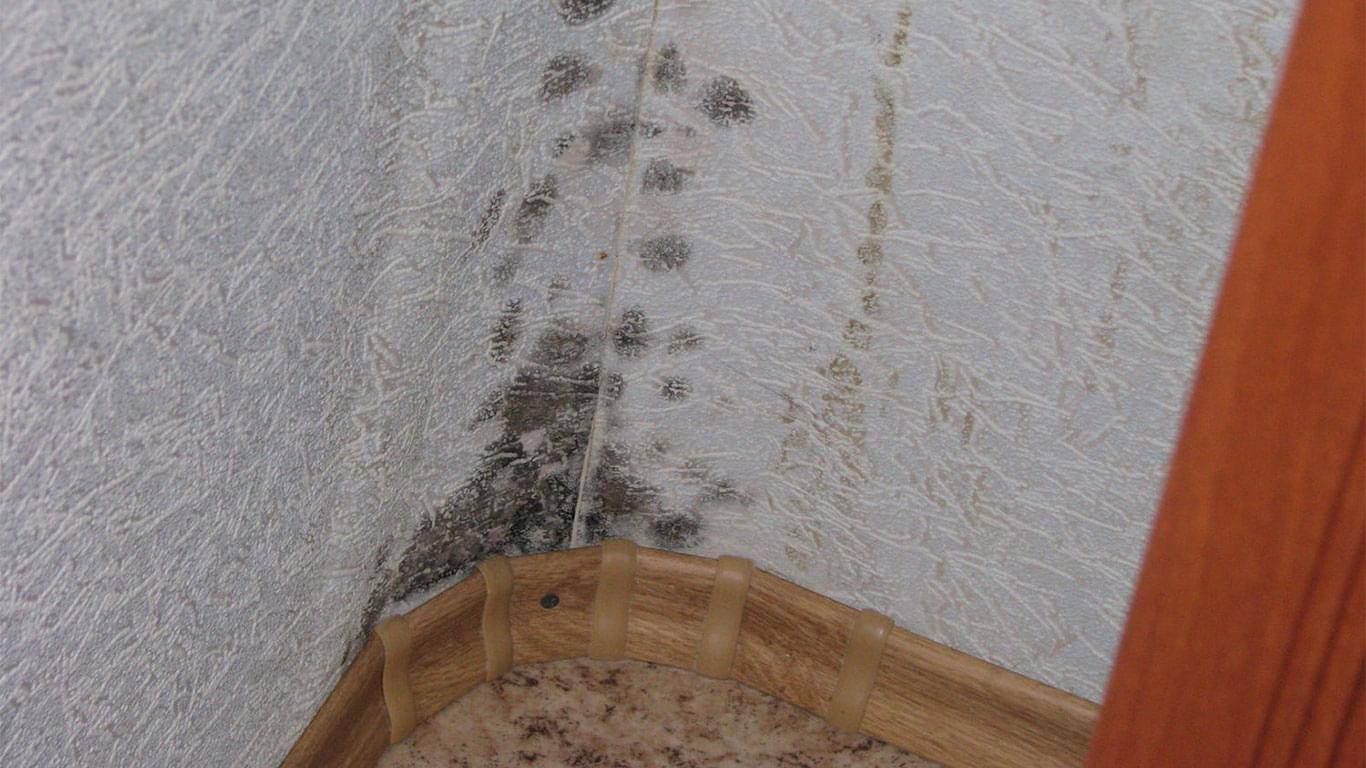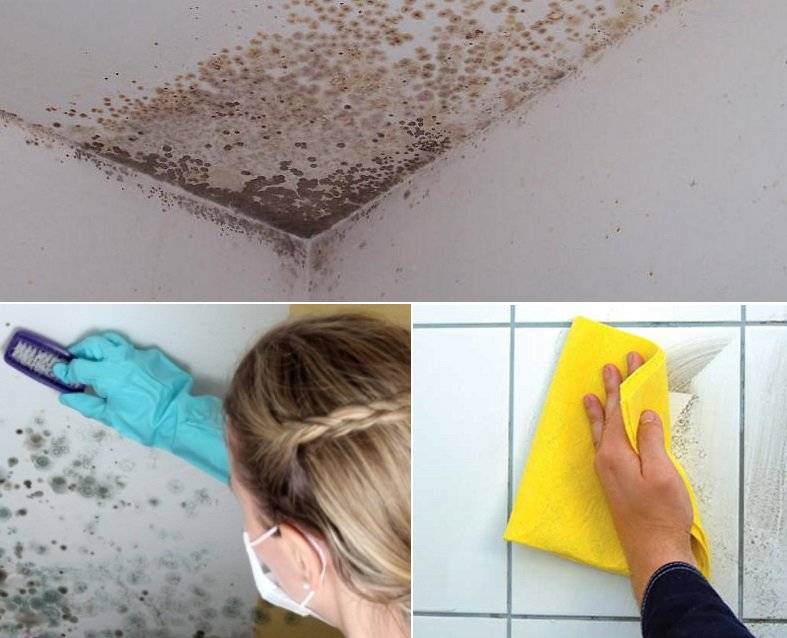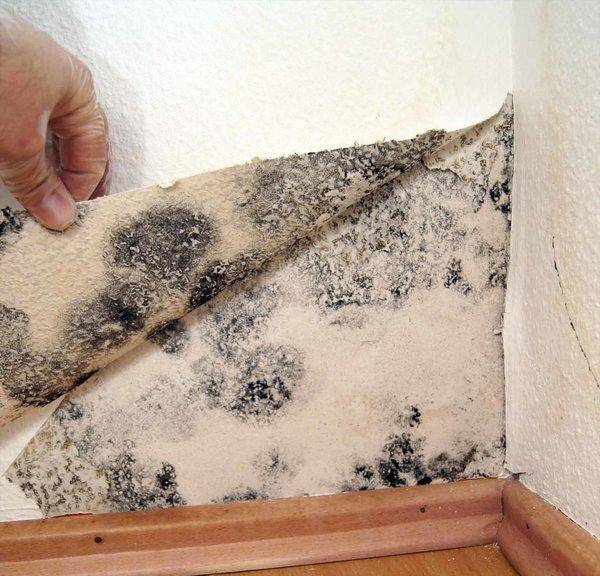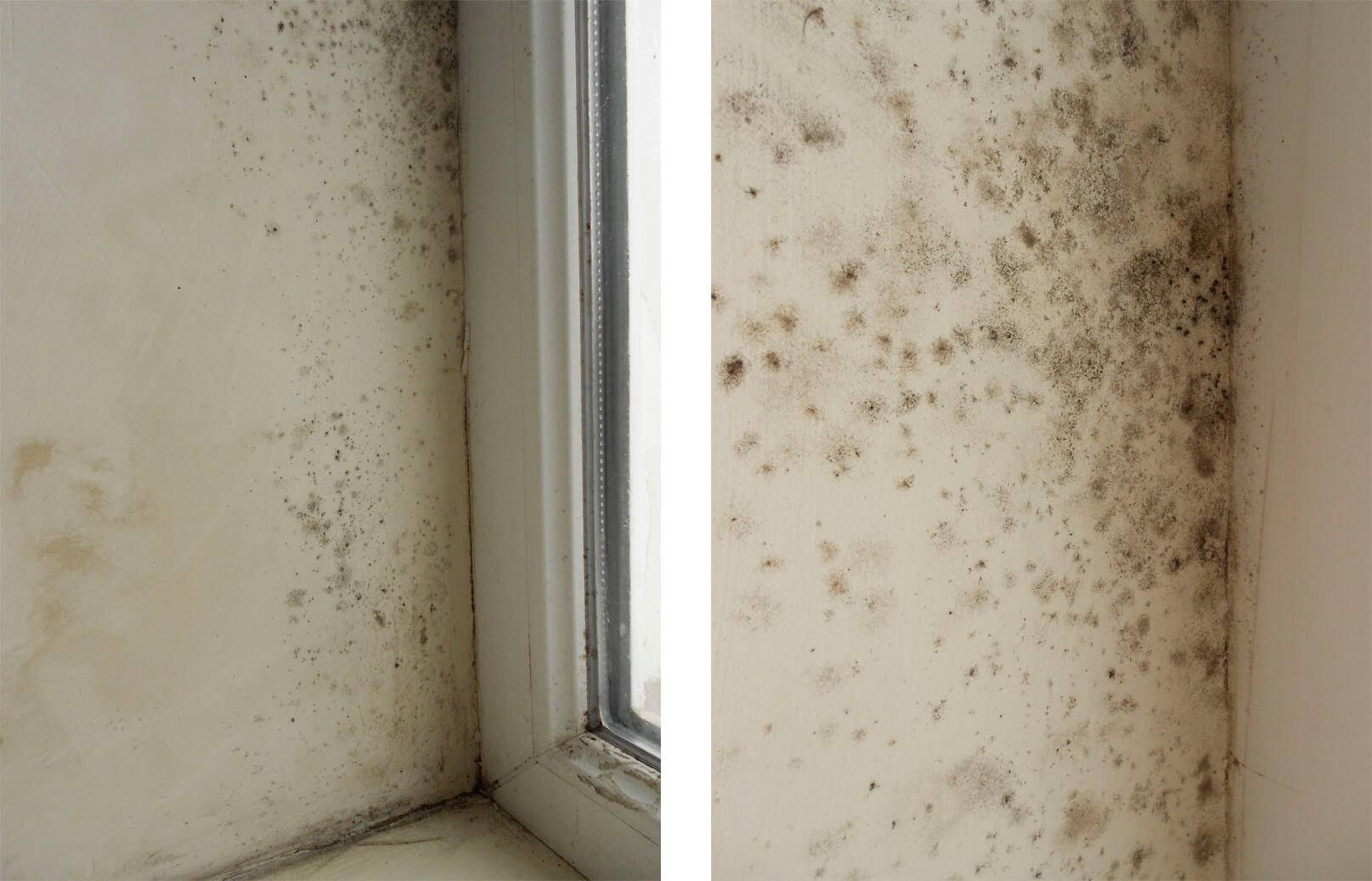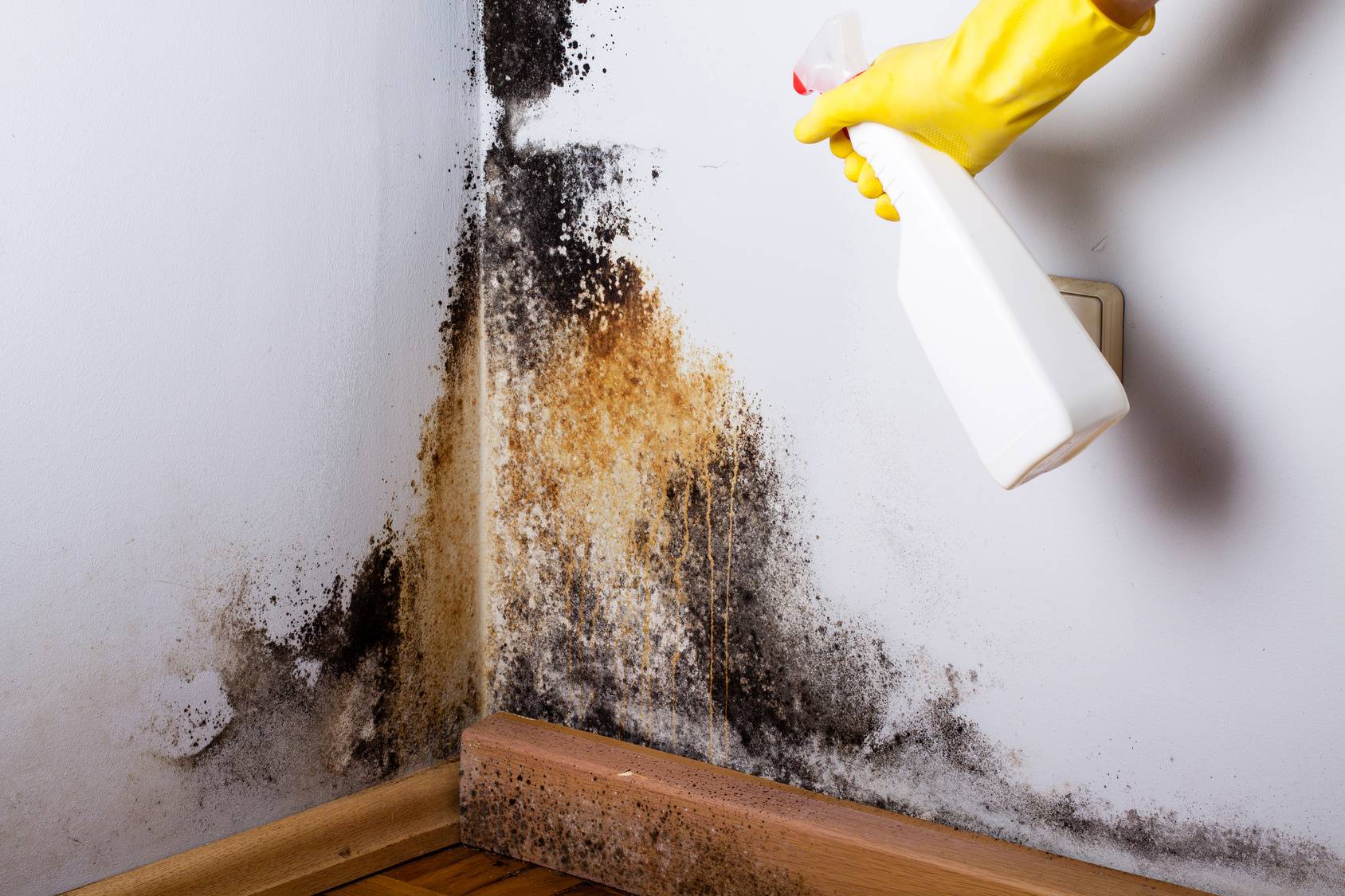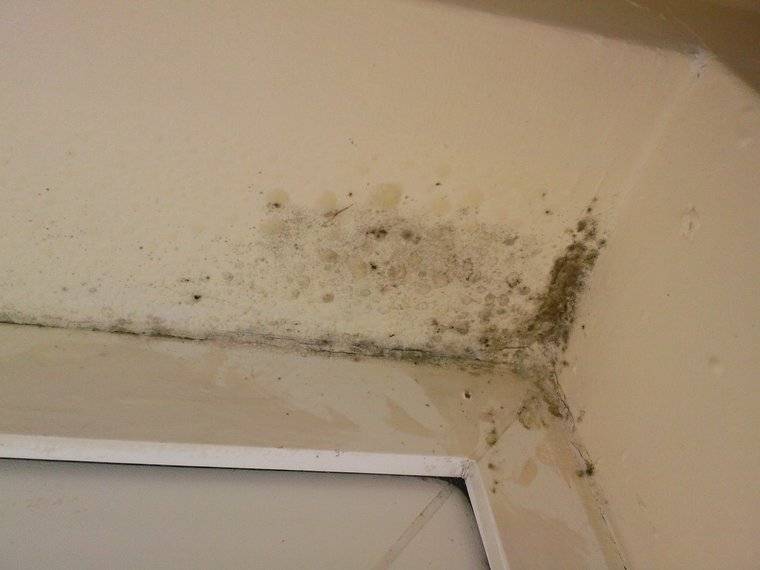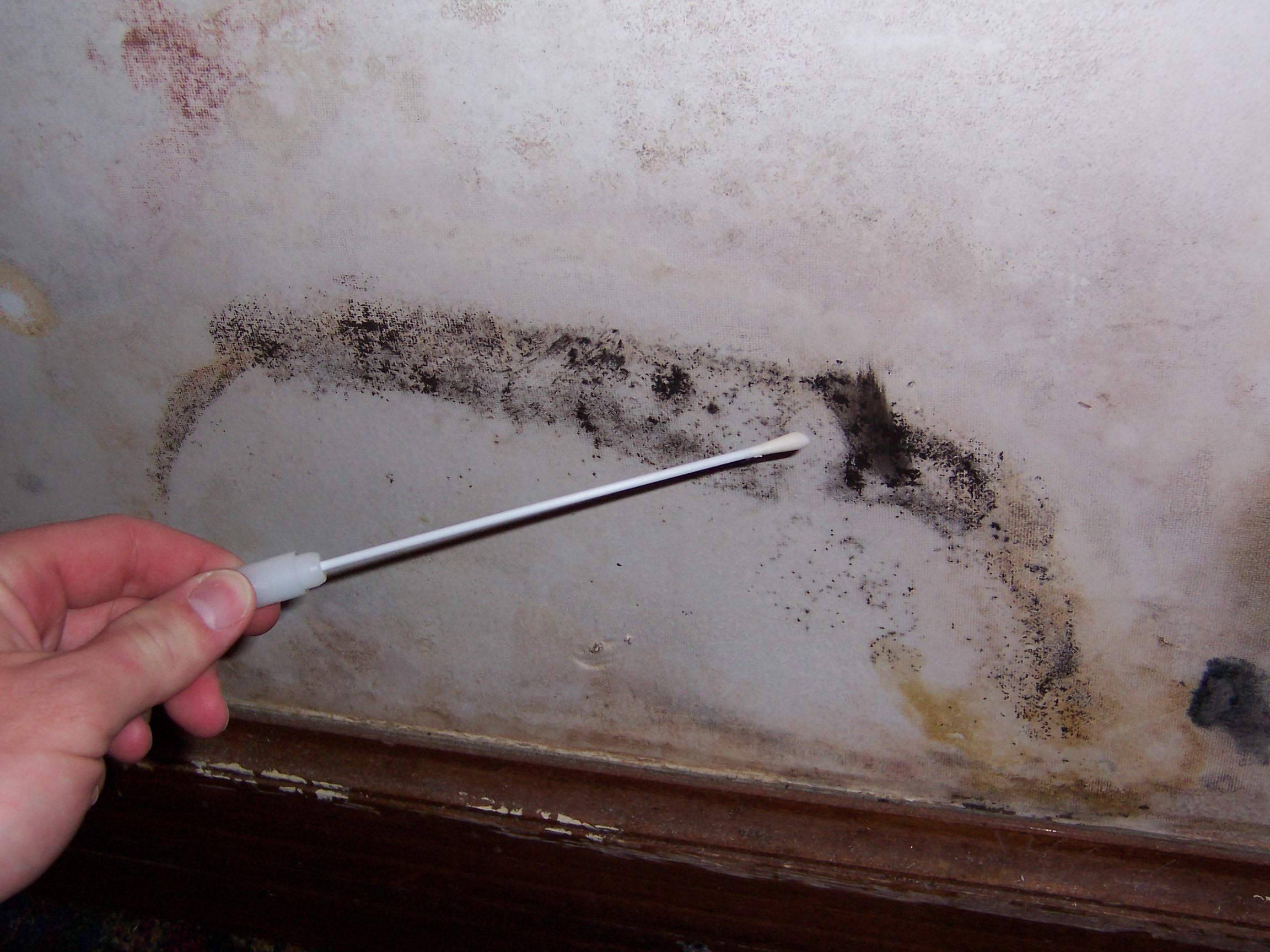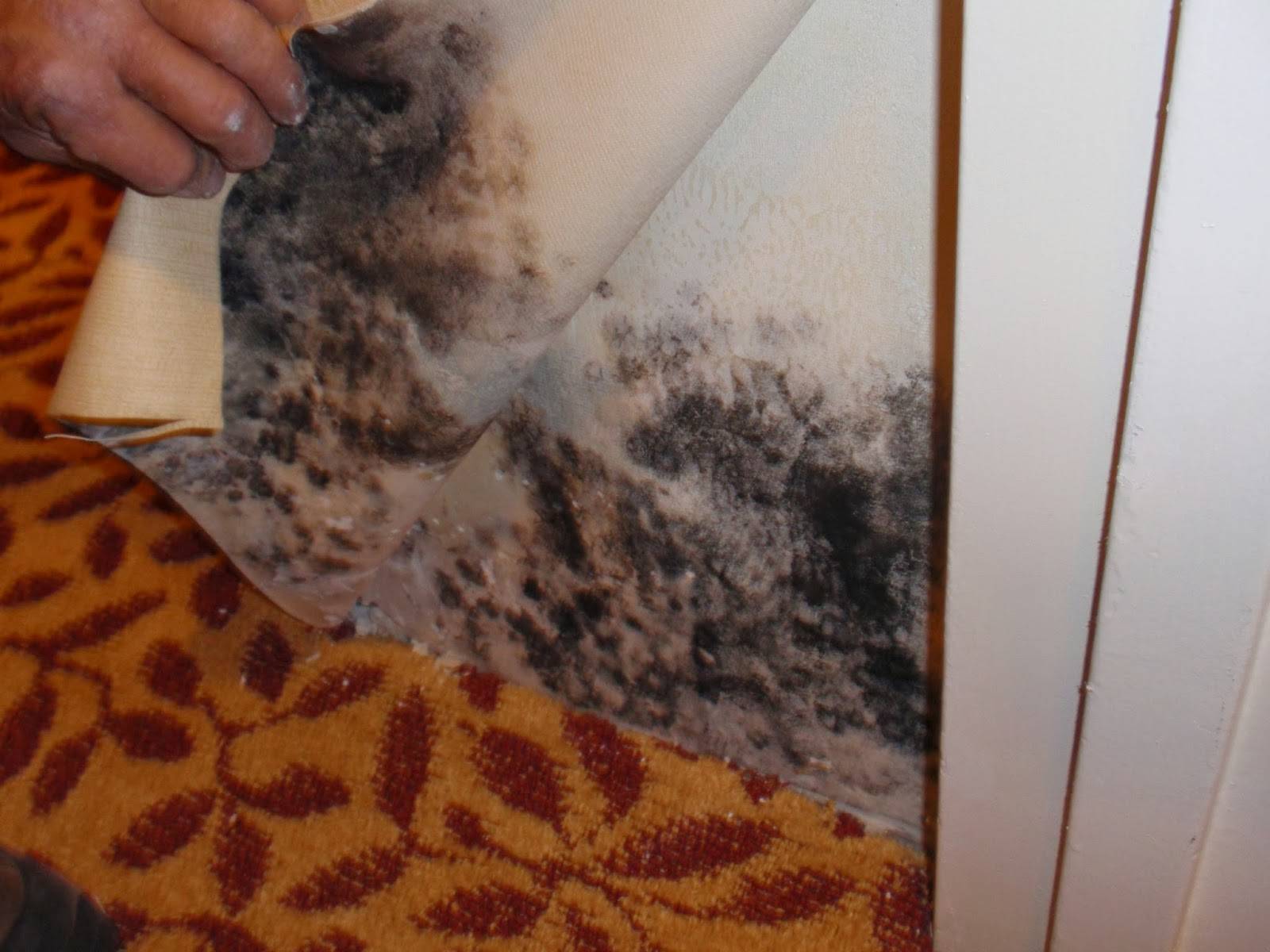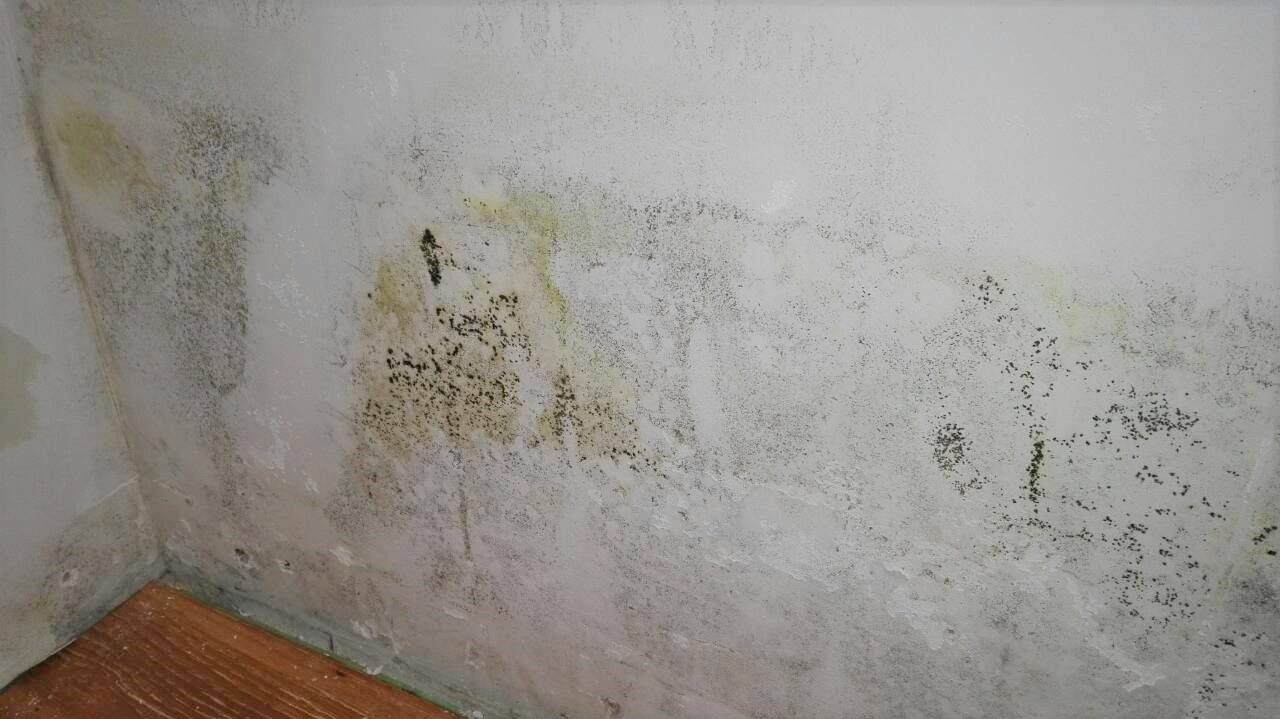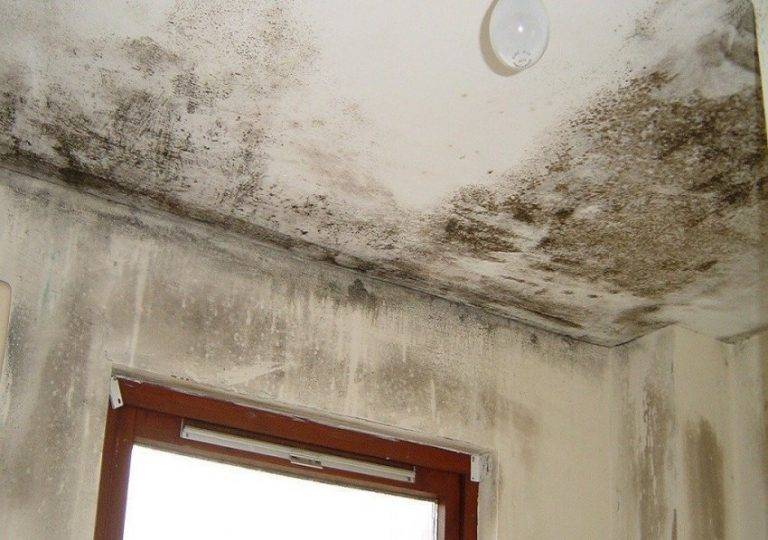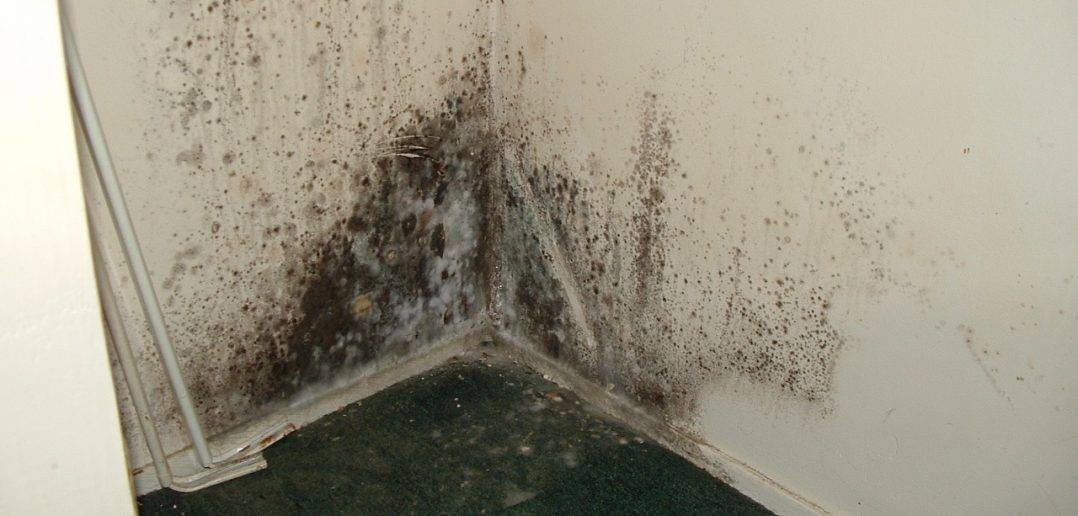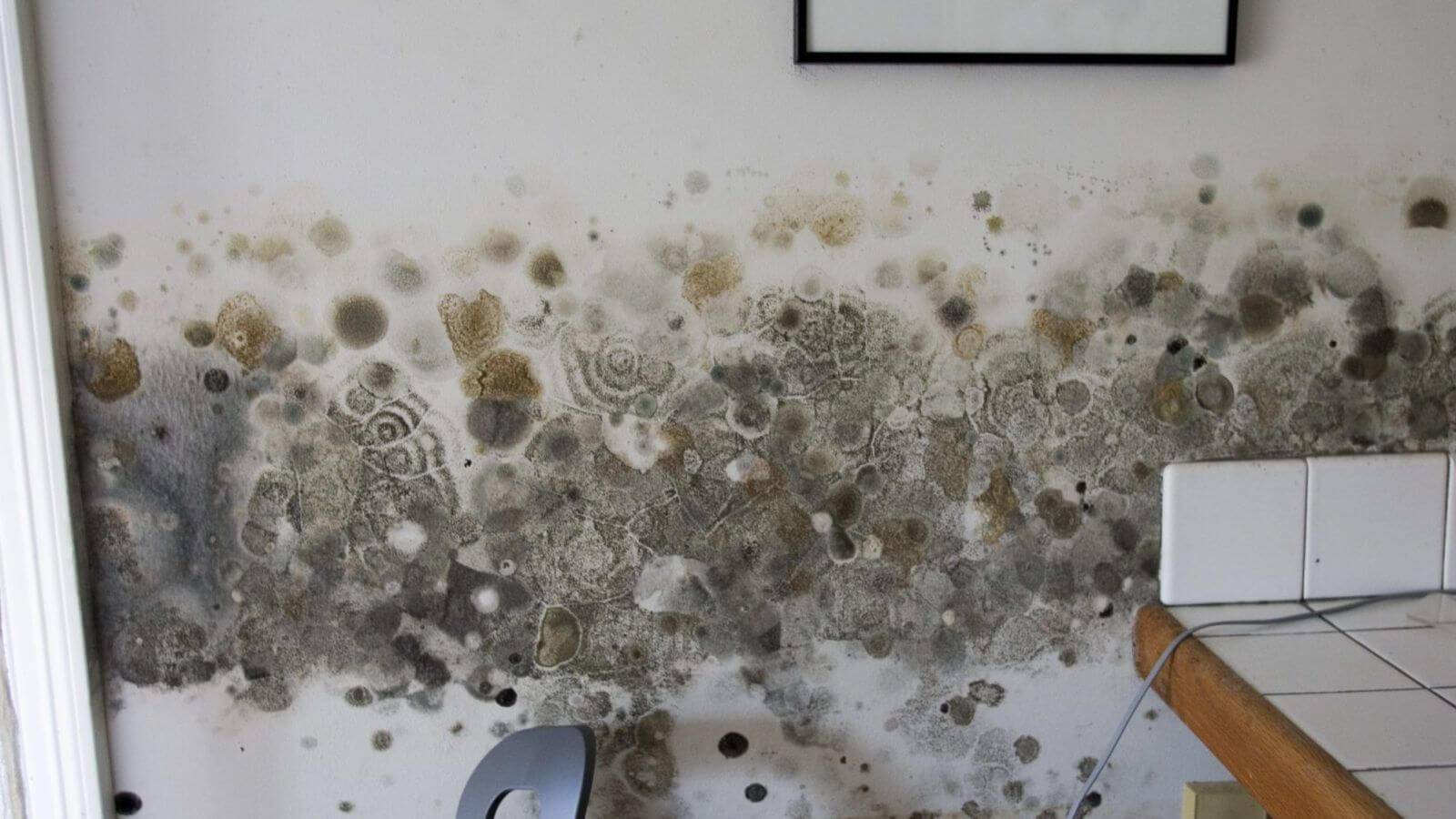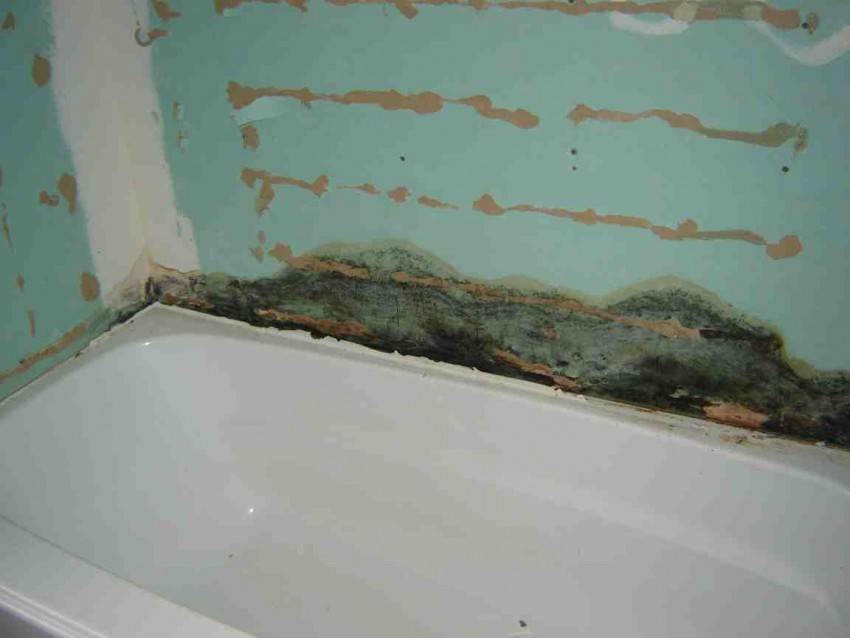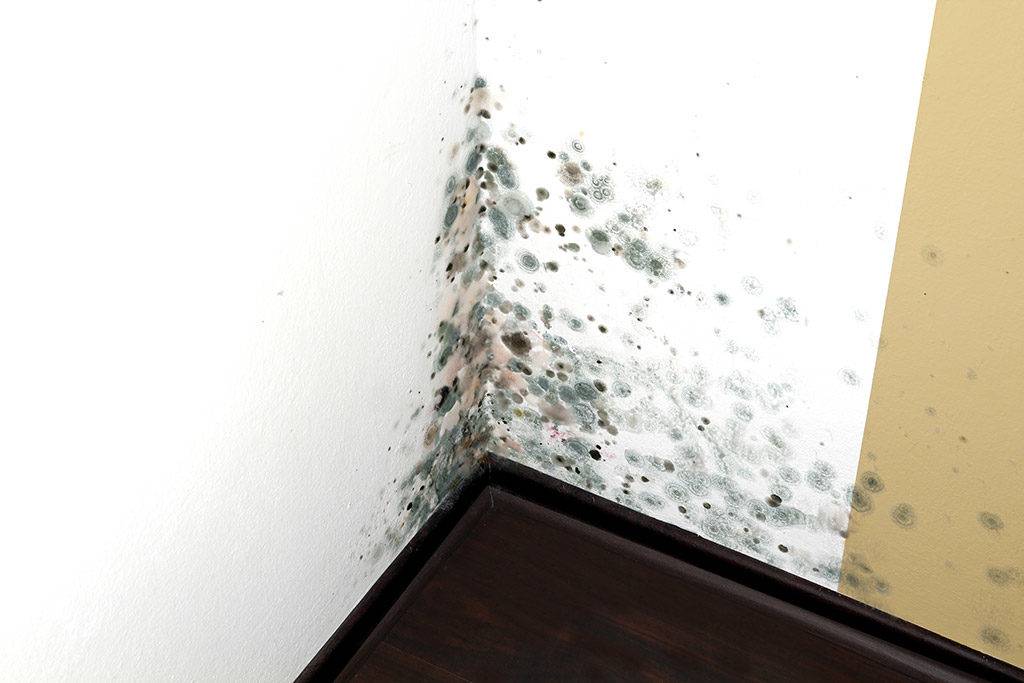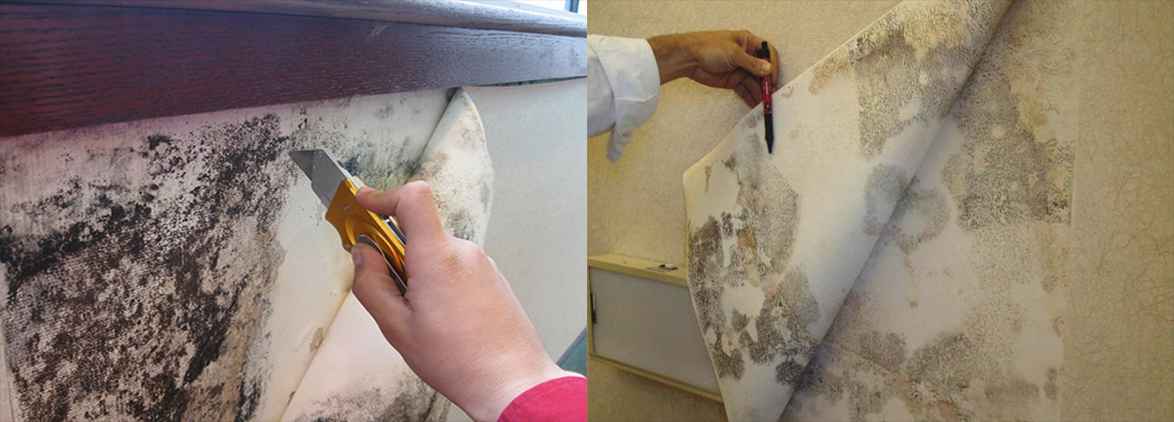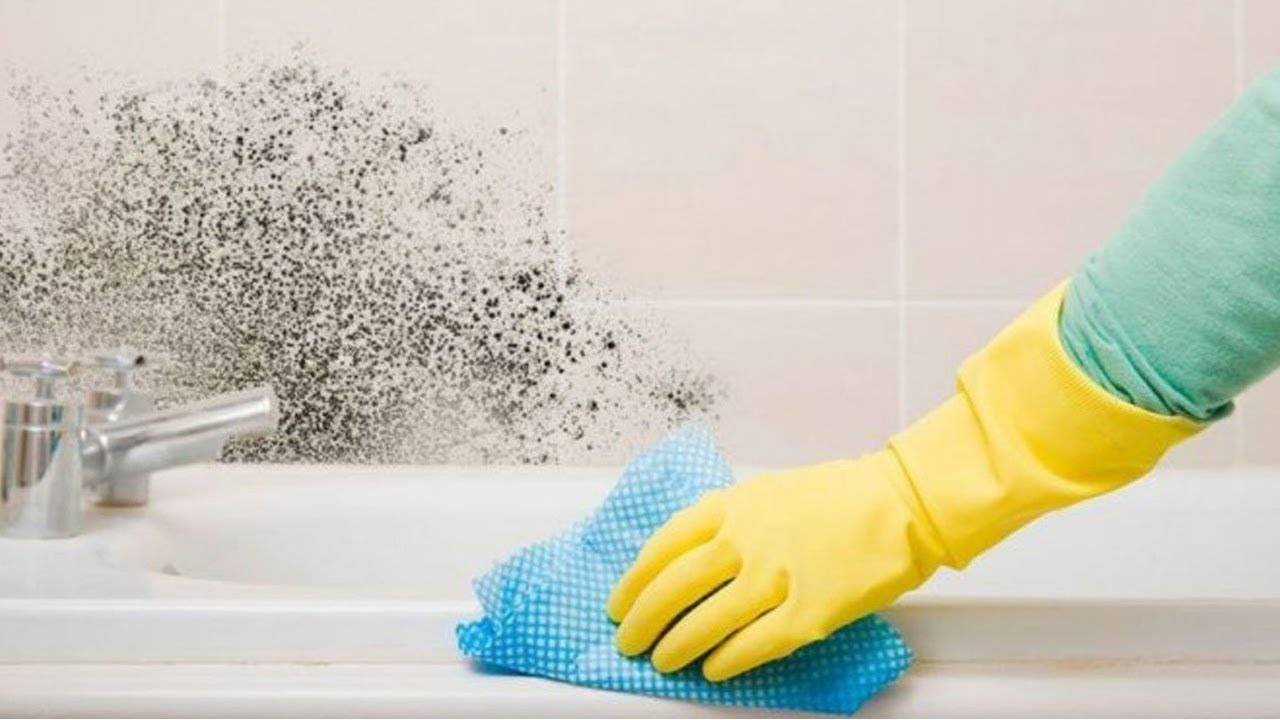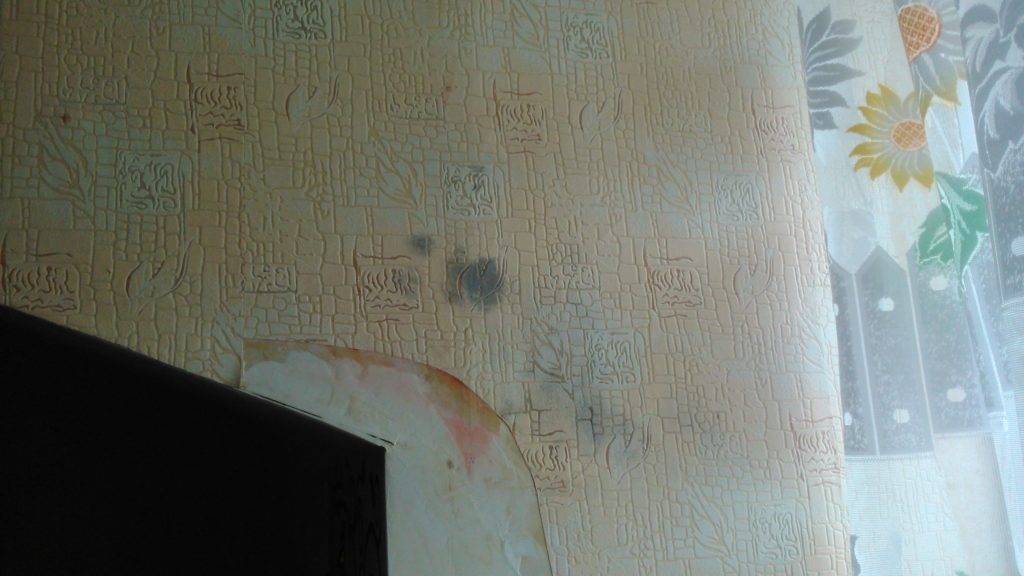How to get rid of mold under linoleum
Linoleum is laid on any surface for practicality and design. If the laying technology has been violated, then mold can penetrate the chipboard under the linoleum (as well as other surfaces). It is almost impossible to detect it immediately.
People start to pay attention to a problem when it smells strong. When asked what to do if linoleum stinks of mold, it is most often recommended to discard the coating, replacing it with a new one.
The base of the floor on which it was spread will have to be carefully processed.
Wooden floor
What to do with a wooden floor in this situation is described above, in the section describing how to destroy the fungus under the floor and on its surface. The actions of the owner will depend on the degree of damage to the material by spores. But in this case, it is better to process not only the visible areas of the lesion, but the entire wooden floor. And now it will be necessary to do this in all rooms (if not for the purpose of struggle, then for prevention). In this case, it is better to use not folk methods, but to resort to serious antiseptics sold in the store.
Concrete floor
Mold "bites" into concrete more slowly than into wood, but it will be more difficult to remove black unpleasant plaque from such a base - after all, at least 2 cm of the layer will have to be cleaned off. For this, it is recommended to use a grinder, unfortunately, from which there is a lot of dust (you will have to work with maximum protection).
Then the concrete floor is treated with an antiseptic. It is best to use a professional instant-action product that fights against spores and immediately creates a special protective film on the surface (a fairly effective drug - "SZAVO").
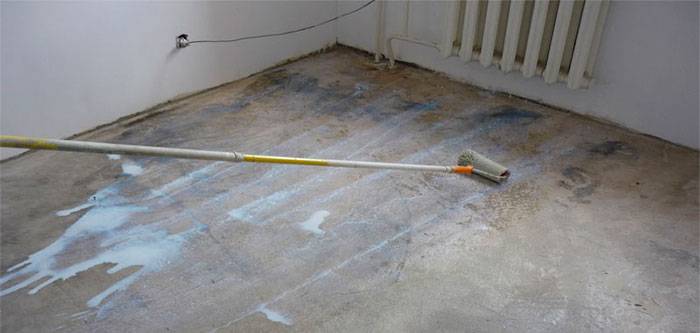
After that, the masters recommend applying a sheet of roofing material and making a new screed over it. But it is better to throw away the spoiled linoleum.
We advise you to watch an excerpt from the program on how to get rid of the fungus on the floor.
What to do with the walls
A correct assessment of the situation can save both time and money. In places where mold is most common, it is advisable to lift at least a piece of wallpaper to assess the condition of the surface underneath. If mold has infected the plaster, it will become loose, damp and dark.
In this case, it is useless to clean the wallpaper: the fungus has penetrated the wall too deeply, and after a while the problem will recur again. If only the wallpaper is moldy, you can try cleaning it. The methods depend on the type of wall covering.
It will also be interesting: How to erase a handle from a leather sofa
Acrylic wallpaper, washable or non-woven
All these materials easily tolerate a moderate amount of moisture, and are sufficiently resistant to abrasion.
You can clean them with any anti-mold agent, but you need to do it with care. The only prohibition is high temperatures, heat exposure can damage the coating
Another helpful article: How to clean brass at home
Paper wallpaper
Paper wallpaper is a budget option, but rather fragile. If they are severely damaged, it is easier to get rid of them than to clean them. If mold has penetrated deep into the material, unaesthetic dark spots may remain. You will need patience, a hair dryer, and a soft brush to clean. Only the dry method is suitable: moisture will ruin the wallpaper.
The walls need to be dried with a construction hairdryer or even ironed with a hot iron, and after the paper has dried, remove the fungus with a brush. If the coating has moved away from the wall, plaster needs careful processing, after which the wallpaper is carefully glued. When the glue is dry, you need to iron them again.
Mold is not always removed by cleaning.A large percentage of damage to bricks and plaster requires serious intervention: SES will have to be called.
Thanks to thermal imagers, specialists will detect all lesions. They will fight mold not only by mechanical cleaning, they will have at their disposal gas treatment, hot or cold fog installations, high-quality safe antiseptics.
Preventing mold formation
Preventing mold growth is easier than fighting it. To prevent fungus on wallpaper, you should adhere to a number of rules:
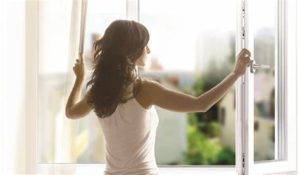
Ventilation of premises
- when carrying out the first repair, if necessary, insulate the walls;
- during the next repair, before pasting, treat the working surface with preventive compounds;
- inspect the corners, joints and slopes for the presence of mold and remove the fungus that has already appeared, leaving it no chance for further development under the wallpaper;
- prevent an excess of moisture - in case of flooding of the room, promptly dry the walls and then spray them with special antifungal agents;
- ventilate the room and arrange drafts as often as possible;
- open curtains over the entire window opening at least once a day, preferably for several hours - sunlight suppresses the fungus;
- do not push furniture too close to the walls - there should be a gap of 5 centimeters or more for air circulation;
- light scented candles from time to time - essential oils of lemon, orange, bergamot have fungicidal properties.
The list is not exhaustive.
Finally about prevention
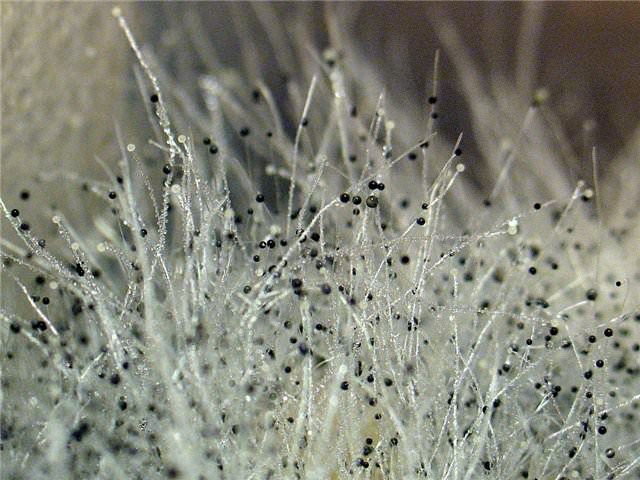 Mold prevention
Mold prevention
If you are just moving into a new apartment or decide to build your own house, then first of all immediately ask the question about mold. If you don't even want to face it in the future, then immediately choose primers, plasters and other consumables for repairs, which already include an anti-mold substance. Thus, you will not only immediately destroy possible breeding grounds of mold in the form of spores on walls or other materials such as door frames made of wood, but also prevent the possible appearance of mold in the future.
- ventilation. Insufficient ventilation of the room often leads to the fact that the mold chooses just such a room to organize its colony. Ventilate your home regularly, even during the cold season;
- temperature. It is sad to admit, but it is room temperature that is most suitable for mold and optimal for development and growth. If, at the same time, your room is still damp enough, then consider that you yourself have created all the favorable conditions for a mold settlement;
- humidity. It has been said more than once how she is loved by mold. It is a kind of catalyst adored by the harmful fungus;
- preliminary and regular intermediate processing. Do you have doubts? Strange smell? Do not hesitate to take measures to eliminate and prevent the formation of mold in your home;
- lighting. Mold loves the dark. She just loves it. It is best to organize the dimly lit areas of your living space in such a way that there are enough lamps.
 Ultraviolet light from mold
Ultraviolet light from mold
It is better to keep an ultraviolet lamp at home and, at the slightest suspicion of mold growth, immediately turn it on and leave it for some time in the affected room. Even if the defeat is not confirmed, there are suspicions.
in a wet season, when there is no heating, make sure that especially damp rooms in your house or apartment are heated at least with the help of electric heaters. Dry air is our everything in the fight against mold and the prevention of its formation.
Not found
2 Varieties of house mold
Removing mold and mildew is a very time consuming procedure. Therefore, to guarantee the success of this enterprise, you should familiarize yourself with the basic varieties of house microorganisms.After all, the removal technique largely depends on the type of mold or mildew to be destroyed.
The most common types of microorganisms living at home include the following types:
Aspergillus niger is the same black mold, and in fact, the mourning color does not mean a high degree of danger, but the readiness for the spread of mycelium (the puberty of the fungus). Colonies of Aspergillus niger live on any building or decoration material - from concrete and plaster to wood and whitewash, deeply embedded in its structure, which collapses as the mold grows. In addition, black mold is not killed by the cold, such a plaque is not afraid of the cold, so it remains to live even in abandoned houses.

Black mold is dangerous to human health
Penicillium is a green and bluish mold that requires organic matter to grow. It usually appears on food or on a thin film of fatty deposits deposited on the walls, ceiling and floor of the kitchen. Compared to the black version, green mold is relatively harmless. However, despite the fact that the first antibiotic, penicillin, was obtained from Penicillium notatum, it is not necessary to breed such mold on the wall in the apartment. After all, it can cause allergies or spoil food supplies.
Fusarium is a white or brown mold that lives on indoor plants. Such fungus is relatively harmless for the walls of the house, but for plants, fabrics, leather products and paper, Fusarium poses a quite tangible threat. Therefore, in this case, you must fight mold on the walls of your apartment with the same diligence as in the case of the green variety. In addition, Fusarium is a putative cause of dermatitis in humans and animals.
Serpula lacrymans is a more complex species of organics that parasitizes wood. Serpula lacrymans is widely known as the mushroom house. Outwardly, it manifests itself in the form of a fluffy white coating, similar to a cobweb, covering wooden structures. However, this variety is extremely dangerous not only for wooden houses, but also for humans. At home, Serpula lacrymans reproduces very quickly, poisoning the atmosphere of the home with its stench. Therefore, you must remove the fungus from the walls before it survives you from the house.
Well, how to do this, we will consider below in the text, paying attention to each type of mold. After reading our tips, you can get rid of mold on the walls in an apartment or private house with minimal effort on your part.
What is dangerous
Mold is dangerous to any surface it comes into contact with. Foods affected by the fungus should not be eaten. Wooden objects and buildings can be destroyed almost entirely by mold; Earlier, oak houses, where the floor was affected by mold, were burned so that neighboring buildings would not suffer. People, being in a room affected by mold, are exposed to infection with harmful substances.
For living organisms
Mold harms all living organisms, it is dangerous for human health, because, getting into the body, it leads to the development of intoxication and allergies. Children, the elderly and those whose body is weakened due to illness or decreased immunity are especially affected. Human exposure to fungi occurs through the inhalation of spores, due to contact with the skin, and also when eating mold-tainted foods.
When spores get on the skin, allergic reactions occur. The defeat of the mucous membranes by mold spores leads to the appearance of a chronic runny nose and dry cough, the eyes can become inflamed. The fungus can cause asthmatic attacks and diseases of the cardiovascular system, articular-rheumatic complex.

For materials and building structures
A colony of mold can develop on almost any material - wood, concrete, brickwork, paint.The fungus not only spoils the appearance with ugly spots of different shades, but also corrodes the surface, while the rate at which the base deteriorates depends on the material and the humidity of the environment. Wooden objects and structures can turn to dust in a few months.
The causes of mold
The appearance of mold under the wallpaper after renovation does not just happen. There are reasons for everything, including the appearance of a dark plaque. What to do in such a situation? After carrying out repairs in your apartment (or house), for the first time, you should be much more careful so that the moment the fungus appears under the wallpaper is not missed - the infection spreads at an incredible speed.
While black mold is believed to be the main threat, there is also white mold, which can be recognized by its characteristic musty odor in a room. First you need to identify the mold.
Particular attention should be paid to corners and outer rooms. One dot on the wallpaper is enough to start sounding the alarm
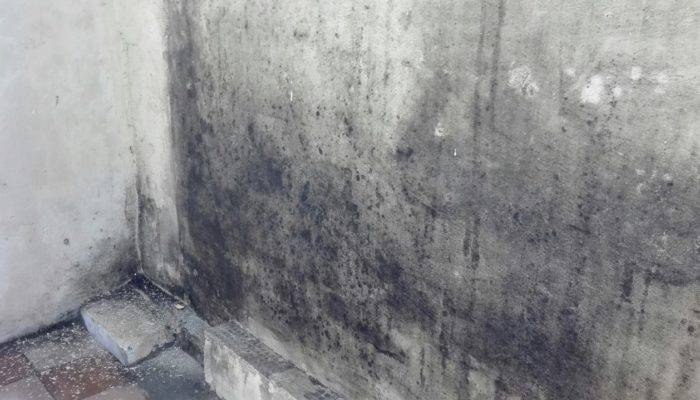
In order to be able to detect a danger in time, you need to know the reasons why it arises. For the development of mold, certain conditions are needed:
- dampness;
- warmly;
- lack of normal ventilation;
- external factors (for example, high humidity and cold weather outside the window);
- leaking pipes;
- condensation in low-quality double-glazed windows;
- lack of waterproofing.
To combat mold, it is important to first identify the causes. Mold spores fly through the air, even if the person cannot see them.
By constantly inhaling them, a person exposes himself to the risk of diseases that are sometimes difficult to cure. At the moment, even the most powerful agents cannot cope with mold if the source of mold is not eliminated. For a while, it may disappear, but then the mold will return again.
It also happens that there are no visible reasons for the occurrence of mold, but it still ruined the walls, then it is worth turning your attention to the latest events. Mold may appear if repairs were recently made (including ventilation ducts), walls were insulated, new windows and doors were installed, as well as when installing large-sized furniture in the room
The harm of mold to human health
Those who are faced with this phenomenon are wondering how to remove mold from wallpaper and what needs to be done to do this. First of all, you need to understand that it occurs in damp or poorly ventilated rooms with high levels of humidity. When a fungus appears in the apartment, an unpleasant smell is established. The walls, ceiling and objects in it are covered with a gray coating. The negative impact on human health is expressed in the following:
- allergic reactions, headaches, skin problems, cough, conjunctivitis occur;
- when the spores of such fungi enter the body, they settle on the mucous membrane of the respiratory tract, which is expressed in a chronic rhinitis and can lead to severe pulmonary diseases;
- as a result of a long stay in an infected house, the immune system suffers, which is expressed in an exacerbation of chronic processes.
Types of mold in living quarters:
- Green - represents the least health hazard.
- A dark green shade, you will have to tinker with it, but if you act decisively immediately after its identification, getting rid of it is not difficult.
- White, in the form of fluff, spreads almost imperceptibly and in a short time the entire apartment can be affected. You should act immediately, since it is very dangerous for humans, you need to take it off with gloves and a respirator.
- The greatest danger to humans is black mold, since it can negatively affect the immune system, especially if it is weakened. To clean it, you will need special chemicals.
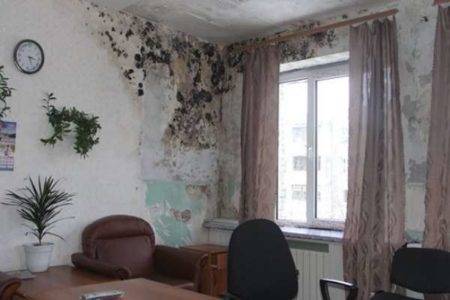
We recommend that you familiarize yourself
What is mold and how is it dangerous
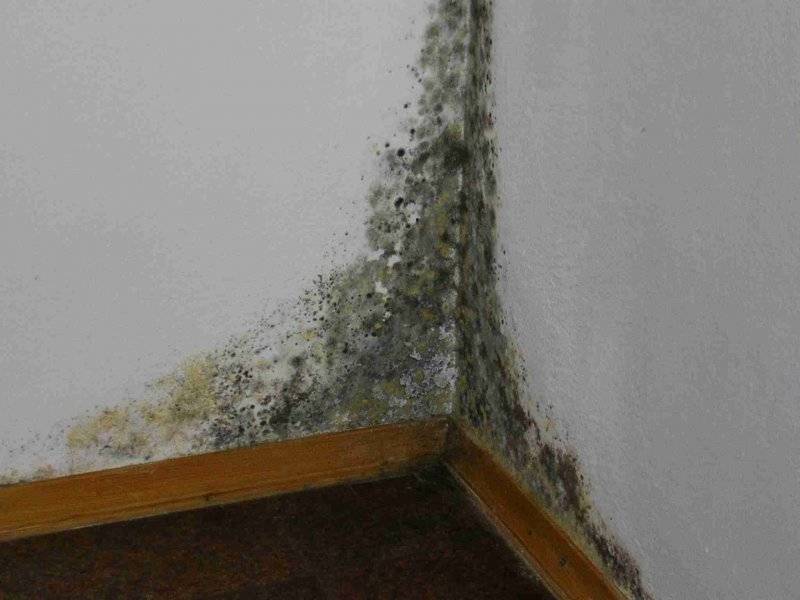 Mold is understood as special microscopic fungi that invariably appear in musty and damp places in the form of randomly spreading plaque.
Mold is understood as special microscopic fungi that invariably appear in musty and damp places in the form of randomly spreading plaque.


- severe allergic attacks;
- disorders of the gastrointestinal tract;
- skin diseases and irritations;
- choking, cough, asthma syndrome.
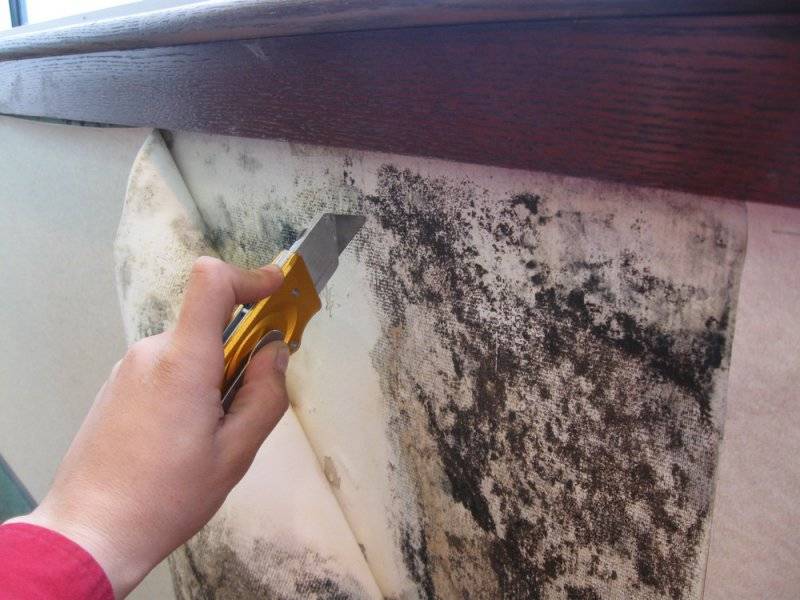
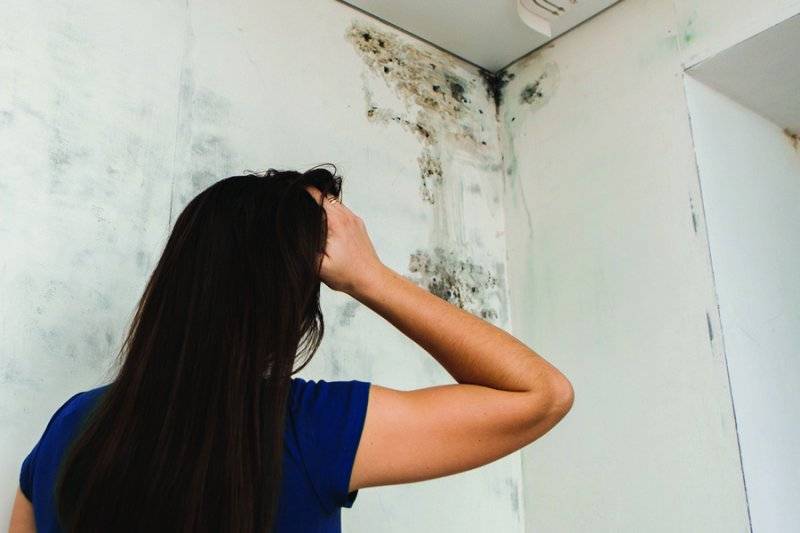
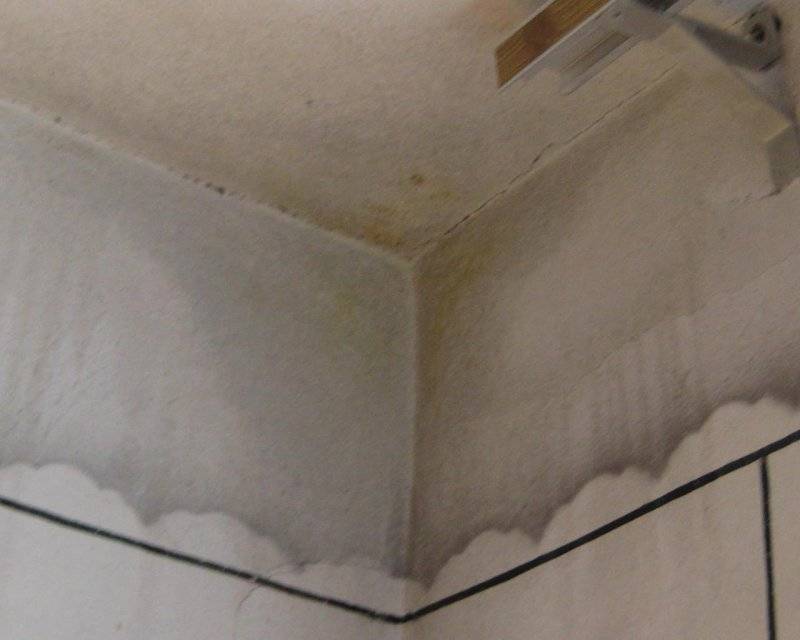
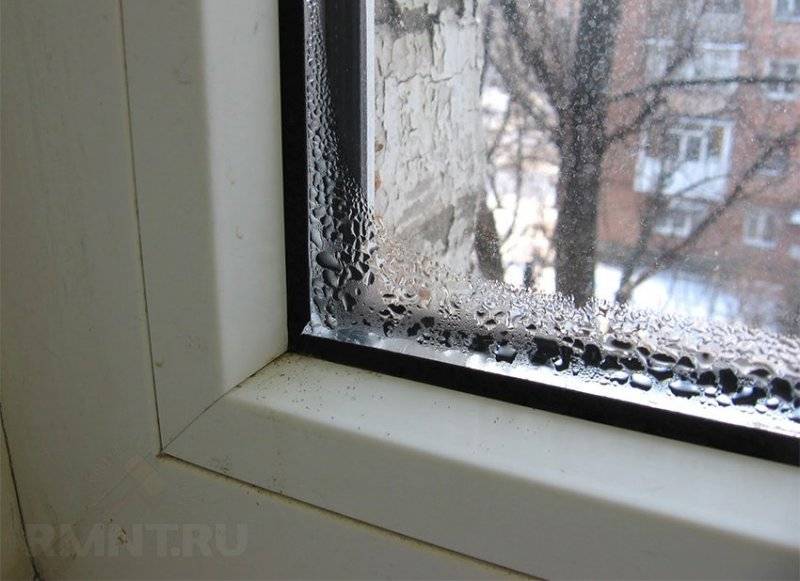

 In this case, small children and animals are especially susceptible to the influence of harmful microorganisms. The situation when parents are perplexed about a child's illness that has come from nowhere is very common. And even more often, the mold that is systematically spreading along the walls becomes its true cause. That is why it is necessary to get rid of these formations as quickly as possible and to prevent the negative impact of spores on the human body.
In this case, small children and animals are especially susceptible to the influence of harmful microorganisms. The situation when parents are perplexed about a child's illness that has come from nowhere is very common. And even more often, the mold that is systematically spreading along the walls becomes its true cause. That is why it is necessary to get rid of these formations as quickly as possible and to prevent the negative impact of spores on the human body. 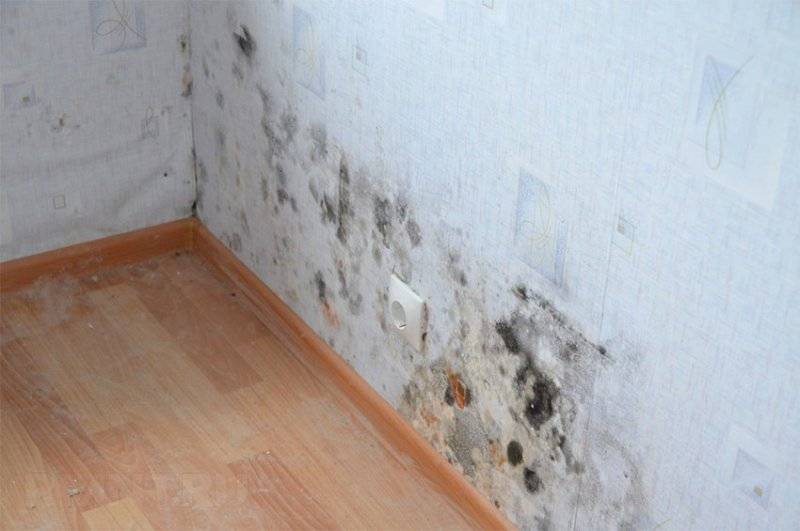
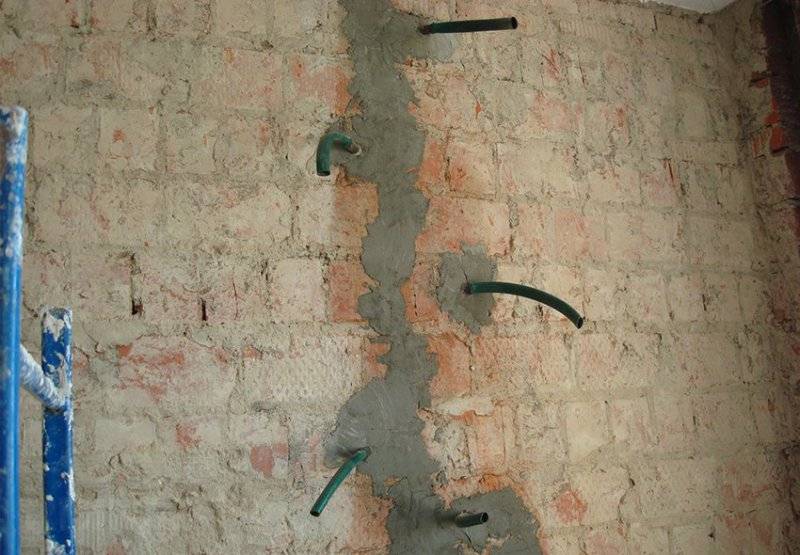

How to stop the spread of mold
Before performing disinfection, it is necessary to suspend the expansion of the affected area and create negative conditions in the premises for its life, which include a number of the following:
- In the summer season, window frames should be opened to fill the dwelling rooms with dry, fresh air, draft and ultraviolet light, which have a detrimental effect on mold. In winter, it is necessary to create forced ventilation. In this case, a special fan should be installed in the exhaust outlet of the bathroom, which, when turned on, will remove moisture from the air.
- Eliminate sources of dampness by replacing faulty plumbing fixtures and leaking taps, minimize drying laundry in the apartment, and cover pots with lids during cooking. In the kitchen, the best solution is to install an extractor hood.
- The ideal temperature for mold to spread is between 20-22C °. At a higher index, this process stops. In this case, it may be necessary to heat the indoor air using a heater, household dehumidifier or a hairdryer.
- The affected areas of the surface can be eliminated locally by means of an ultraviolet lamp or an ozonizer.
Self-disposal of wallpaper mildew
Some people are happy to entrust the war against mold to professionals, but not everyone can afford such costs (especially if all the savings have already been spent on cosmetic repairs).
To begin with, you can try to remove elementary things - to ventilate the room, keep a certain temperature in the apartment. Of course, it is necessary to get rid of the source of trouble - to close up the seams, remove leaks, return normal air circulation.
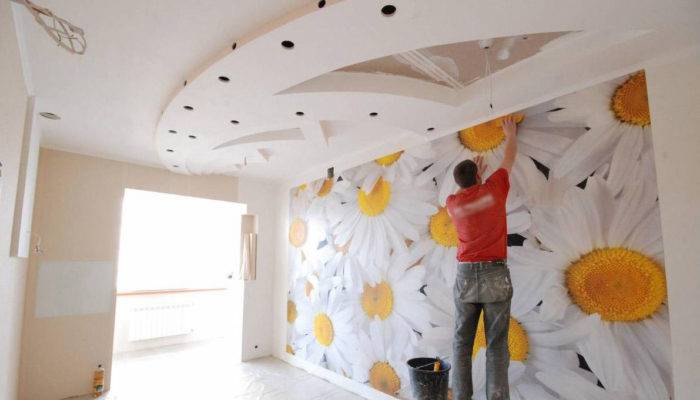
Removing mold without peeling off the wallpaper is also possible, but only if the lesions are very small. Get rid of the fungus at home by strictly observing the procedure for processing the walls, and also use proven means.
The first stage - preparation for stripping
All furniture is taken out of the room, which is well wiped with a rag dipped in hydrogen peroxide. If the mold area has reached a large size, then the wallpaper is removed, folded into bags and destroyed - the mold on the wallpaper tends to stay in the air. The best thing is to burn it.
Scrub the walls with a stiff metal brush or sandpaper to remove mold
It is important here to work in a respirator so as not to get sick. The plaster will also have to be cleaned down to the concrete base, because it is also affected by mold.
At the end, the walls are cleaned of dust - it will be ideal if the surface is well washed and dried.
Second stage - processing
This stage allows you to completely get rid of mold in the apartment. It is advisable to treat the walls with ultraviolet rays, if possible. Using a roller, an antifungal agent is applied in a thick layer to the entire surface.
Then the wall must be washed, looking into all corners, even the most inaccessible ones. And finally, a primer with antifungal components is applied to the surface.It is better to make several layers, applying a new one, after the previous one has completely dried.
Remember some precautions. Be sure to use a respirator not only when cleaning the wall - working with pungent-smelling compounds can burn the mucous membrane
If you use chlorine, thinner, or bleach, remember that they can lighten furniture and wallpaper. After the end of the work, the clothes must be washed (or thrown out, if not a pity), and the glasses must be wiped with a solution of sodium bicarbonate.
What to do and how to get rid of odor and black spots?
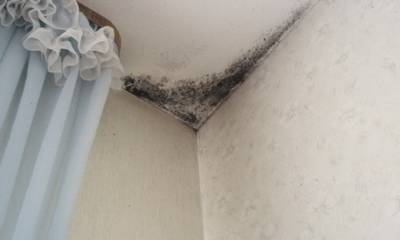 If you find fresh traces of mold, you must first eliminate the cause of their appearance. To stop further distribution, you must:
If you find fresh traces of mold, you must first eliminate the cause of their appearance. To stop further distribution, you must:
- Saturation of the room with sunlight, fresh air.
- Installation of a forced ventilation system.
- Providing an inflow of warm, dry air (+ 20 ... + 23 degrees) using electric heating devices.
After eliminating sources of dampness, frequent wet cleaning with antibacterial drugs will be required.
To further combat the "uninvited guest", you will need the following tools:
- a special solution for the destruction of pathogenic microorganisms;
- antiseptic solution;
- gloves;
- respirator;
- putty knife;
- sandpaper;
- sponges.
First you need to get rid of old wallpaper and clean the walls (learn how to remove liquid, photo wallpaper, washable wallpaper, including from drywall)
Loose plaster is completely removed.
After that, the walls are carefully treated with sandpaper, paying special attention to the affected areas.
The walls are treated with a special agent against mold fungi. After a few hours, the procedure is repeated.
It is best to carry out five treatments, and then prime the walls with an antiseptic solution.
Then you can plaster, putty and stick new wallpaper (read here how to distinguish different types of wall coverings and determine which is better).
Important
If all requirements are met, the mold will not reappear
How can you remove it without ripping the wallpaper off the walls?
You can fight pathogenic microorganisms using chemical and folk remedies.
By chemical means
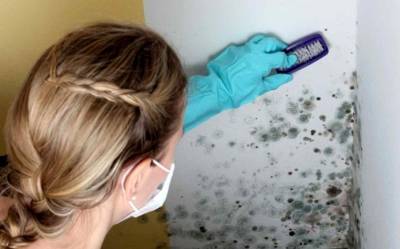 The assortment of good quality fungicides is sufficient to carry out the treatment of any surfaces in the apartment, even wallpaper covering (read how to clean new wallpaper from stains and remove old ones from the walls before repairing, read here). The funds are available for sale at hardware and hardware stores.
The assortment of good quality fungicides is sufficient to carry out the treatment of any surfaces in the apartment, even wallpaper covering (read how to clean new wallpaper from stains and remove old ones from the walls before repairing, read here). The funds are available for sale at hardware and hardware stores.
Before use, you should read the instructions, carefully follow the recommendations and remember about safety. Due to their toxicity, some chemicals can be harmful to human and pet health. Processing must be carried out in protective clothing so as not to get a chemical burn or an acute allergic reaction.
Among the most effective remedies:
- Dali (Russia). Release form - containers with a volume of 5 liters. The tool is universal, it can handle any surface. Destroys mold, moss, and other manifestations of dampness.
- Fongiflud Alpa (Russia). Available in 2, 5 and 20 liters. Suitable for both indoor and outdoor processing. Antiseptic properties are retained even at low temperatures.
- "Olympus Stop Mold" (Russia). Ideal for killing mold in bathrooms, living quarters, basements, cellars. The tool can handle any surface.
- Biotol spray (Russia). Environmentally friendly antiseptic. Non-toxic, safe, it can be used in residential areas.
- Ftlas mykos (Poland). The main active ingredient is ammonia. Highly effective in destroying mold spores.
Folk remedies
To achieve a result when using folk remedies, you need to carry out several treatments. Commonly available means are often used:
- Baking soda is cheap, non-toxic, and suitable for cleaning mold from wallpaper.To prepare a soda solution, a teaspoon of soda is dissolved in a glass of warm water. Moisten a soft sponge in the solution and remove the mold. Treated surfaces do not need additional rinsing with water. A fairly long-term result remains after treating the rooms with this tool.
- Rags are moistened with table vinegar or poured into a spray bottle and the affected walls are treated. Easily removes most molds. At the end of the treatment (after an hour), wipe all surfaces with a damp cloth; it is also necessary to thoroughly ventilate the apartment after the procedure.
- Hydrogen peroxide is a proven and very good antifungal agent. It is used if allergy sufferers or pets live in the house, since it has no smell. Due to its bleaching effect, it can damage some types of wallpaper.
- Ammonia is used to treat non-porous surfaces. Typically, it is used to clean tiles, glass or wood. Before use, the product is diluted with water in equal proportions.
- Chlorine bleach. Most professional antifungal agents contain chlorine. For the destruction of pathogenic microorganisms use "Santry", "Whiteness" and "Domestos". To prepare the working solution, the agent is diluted in water 1:10. Processing is carried out with a soft sponge. Then the treated surfaces are washed with soapy water.

